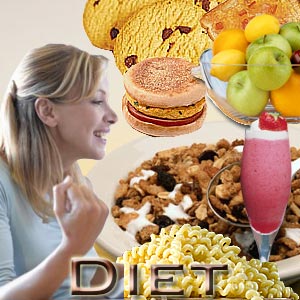Low Sodium Diet

Sodium is a mineral salt that is found in many foods. Sodium plays a vital role in regulating body fluids. Typically we need about 1,500 mg and 2,300 mg per day per day. Sodium plays a vital role in balancing our body fluids, sweat, urine, tears and semen. The salt also aids digestion and allows for nerve transmission. Many health conditions require that the person reduce the intake of sodium. Low sodium diets need some getting used to. Read up this informative guide to maintaining a low sodium diet and how to avoid too much salt in your daily diet.
Low sodium diet
Convenience foods and dressings such as mayonnaise, ketchup, catsup, mustard and pickle relish are usually high on sodium. Processed foods such as canned soups and vegetables and frozen meals are high in sodium. Smoked meats, pastrami, bologna and pepperoni are all high on salt. Barbecue sauce, soy sauce, bouillon cubes, popcorn and pretzels must be consumed in limited quantities.
High salt foods have shown a link to kidney disease, stomach cancer and intestinal disease. Too much salt in your diet leads to water retention and leaves you feeling bloated and swollen. Patients suffering from heart failure are advised to go easy on sodium and move over to low sodium diets. Reducing sodium consumption reduces your risk to developing high blood pressure and heart ailments. Too much sodium causes fluid buildup in the body leading to swelling in the ankles, weight gain and shortness of breath. Salt substitutes found in the market use potassium. Check with your physician before you used salt substitutes since potassium is not advisable for many.
- Do not use the salt shaker at the table.
- Avoid processed foods. Instead opt for freshly cooked food.
- Opt for skim or low-fat milk and milk products.
- Use lemon juice, vinegar or pepper for seasoning.
- Steer clear of brine and monosodium glutamate
- Many sauces and gravies are high in salt content. Go in for broiled or grilled food.
- Choose fresh foods over pre-cooked and processed foods.
- Avoid fast foods and luncheon meats.
- Read labels carefully when buying nuts, chips and crackers.
- Reduce the consumption of canned vegetables and vegetable juices.
- Limit the consumption of salted snack foods and prepared mixes. Choose homemade soups instead.
- Do not consume too many carbonated beverages.
You can add large helpings of fresh vegetables in your low sodium diet. Dark green or deep yellow vegetables are particularly rich in Vitamin A. Citrus fruits and their juices can be consumed. Prepare your food using lemon, ginger, vinegar and pepper. Keep salt to the minimum. Try to steer clear of flavored salts such as garlic salt and onion salt. Play around with spices and herbs like basil, parsley, cilantro and cinnamon for flavor.
Top of the Page: Low Sodium Diet
Tags:#low sodium diet

Therapeutic Lifestyle Changes Diet
Intermittent Fasting Plan
Flexitarian Diet
Dukan Diet Plan
Diet Plateau
High Protein Diet
Elimination Diet
Raw Food Diet
Paleo Diet
Liver Cleansing Diet
Intermittent Fasting Diet
Low Fat Low Cholesterol Diet
Low Carb Diet
Vegan Diet Plan
Hay Diet
Sacred Heart Diet
Heart Attack Diet
Diet after Gastric Bypass
RICE Diet
Gluten Free Diet
Acid Reflux Diet
Detox Diet
Sonoma Diet
Glycemic Index Diet
Montignac Diet
Diabetic Diet Plan
Healthy Breastfeeding Diet
Negative Calorie Diet
Fad Diet
Blood Group Diet
Diverticulitis Diet
DASH Diet
Ornish Diet
3 Day Diet Strategy
Ketogenic Diet
Zone Diet Plan
Anti Aging Diet
South Beach Diet
Gall Bladder Diet
Low Cholesterol Diet
Low Sodium Diet
Diet and Kidney Disease
Scarsdale Diet Plan
Macrobiotic Diet
Osteoarthritis Diet
Depression Diet Plan
Migraine Diet
Restricted Salt Diet
Gout Diet
Rotation Diet
Diet Cancer Patient
Ways to better Health

Boost Metabolism
BMI Calculator
Low Fat Dessert
Whey Protein
Diet and Fitness
Fitness Exercise Articles
Cardio Workout
Aerobics
Yoga
Body Toning
Top of the Page: Low Sodium Diet
Popularity Index: 101,320

